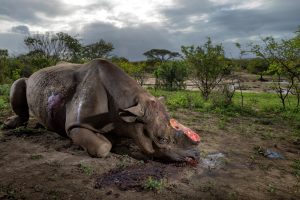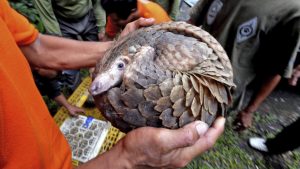Other than China, in many parts of Southeast Asia such as Vietnam, there is heavy reliance on the use of Traditional Chinese medicine (TCM) to help alleviate symptoms and cure illnesses. However, TCM often includes derivatives or parts from endangered animals. Some of the more common ones include:
Medicinal Liquor
Medicinal alcoholic beverages that contain Tokay geckos, cobras, scorpions and sea horses are believed to be able to improve one’s health and virility as well as nourish one’s internal organs. However, there is often little to no scientific research to support these cultural beliefs.
Tiger Bones/Organs
In TCM, Tiger bones are brewed into medicinal wine or grounded into powder and consumed. They are believed to have medicinal properties that are able to treat chronic ailments and replenish the body’s essential energy. The tiger penis is also said to be a potent aphrodisiac that is able to treat erectile dysfunction. However, similar to the rhino horn’s case, there is no scientific research to support these beliefs.
Read more about the TCM trade of tiger parts here.
Rhino Horns
Vietnam and China are two largest consumers of rhino horns as TCM. Do you know? 3 of the 5 rhino species are listed as critically endangered in the ICUN Red List. However, in 2013, Vietnam’s demand for these horns spurred a sharp increase in rhino poaching in South Africa with more than 500 rhinos killed in the first half of the year. The price of one horn is also exorbitant, being said to be worth as much as gold in weight in Vietnam.
This is because they are believed to be able to cure cancer as well as to detoxify the body and treat a wide range of common illnesses. But, there is no actual scientific research to support this and it has been found that their horn mainly contains keratin, which is the same protein that makes up our nails and hair.
According to WWF, corruption appears to be one of the main contributing factor and the social significance that these rhino horns carry is another key driver. Rhino horns are held as a symbol of wealth and power that is strongly associated with success. Thus, there are often bought as a luxury purchase by those in the upper-middle class, wealthy businessmen and even government officials themselves to assert their social standing.
Pangolins
Pangolins are the most illegally traded animals in the world. Aside from its meat being consumed as a delicacy, their fetuses, scales, and blood are used in TCM for their perceived medicinal properties. 4 of the 8 species of pangolin are listed as vulnerable, 2 are listed as endangered, while another 2 are listed as critically endangered on the ICUN Red List of Threatened Species.
An estimated 100,000 pangolins are poached annually from Africa and Asia and most are shipped to China and Vietnam, who are also the two largest consumers of their scales and meat. Things have became so serious that in a conference in South Africa in 2016, CITES banned all trade in all 8 species of pangolin. Pangolin scales are believed to treat a wide range of illnesses including arthritis and improve blood circulation. However, just like rhino horns, these scales are also mainly made of keratin.
Do you know? Pangolins can be found in the wild in Singapore and some students (including myself) have spotted them in NTU at night!
In the News: In 2013, about 6,200 kg of frozen pangolin was seized at Hai Phong Port in Vietnam, on route from Indonesia.
Wild Bear Bile
Wild bears like the Sun Bear and the Asiatic black bear which are both listed as vulnerable in the ICUN Red List, are commonly held in captivity and farmed for their bile as TCM in places like China and Laos.
These bears are usually kept in battery cages that are also known as “crush cages” which are usually so small such that they cannot stand, sit or even turn around. The bile which is produced by their gall bladders contains high levels of ursodeoxycholic acid (UDCA) known to be useful for treating liver and gall bladder conditions. The process of extracting bile is also very painful as they all require surgery or opening up the gall bladder and many times, no anaesthetic or antibiotic is provided. An estimated mortality rate of 50% to 60% arise due to surgery complications or improper post-surgical care. Despite readily available alternatives, there is still a high demand for their bile due to traditional cultural beliefs and such unethical farming methods are still widespread.





